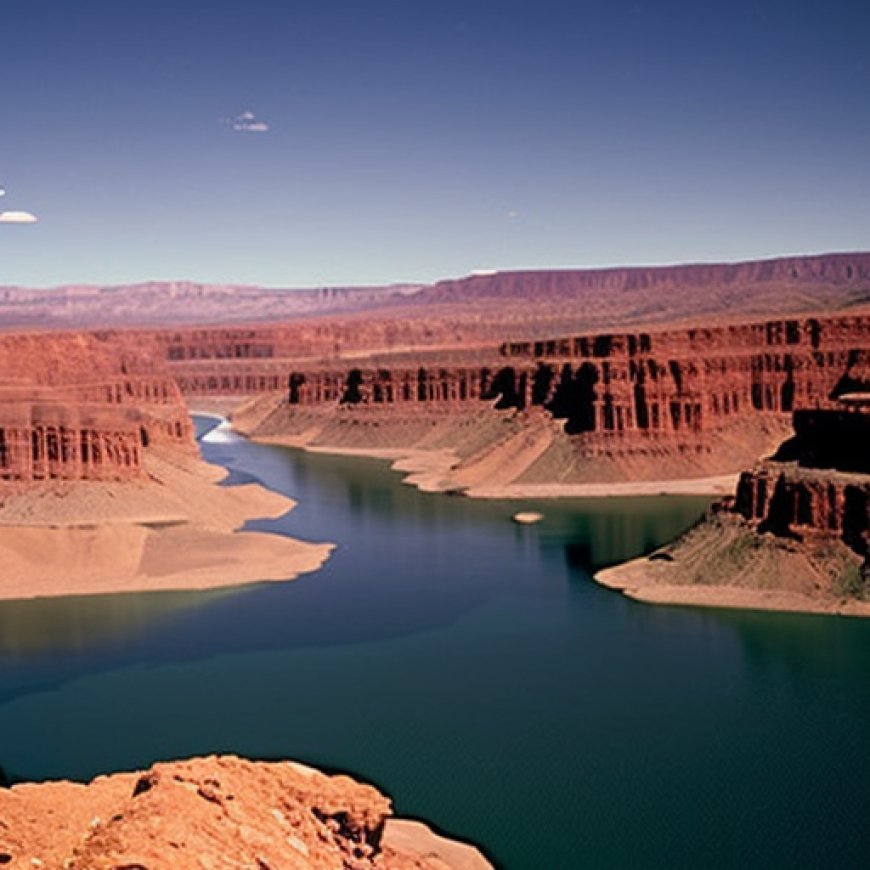Colorado River Basin has lost 10 trillion gallons due to warming temps, enough water to fill Lake Mead, study shows | CNN
Colorado River Basin has lost 10 trillion gallons due to warming temps, enough water to fill Lake Mead, study shows CNN


Rising Temperatures in the Colorado River Basin Impact Water Availability
Rising temperatures have caused a significant decrease in water levels in the Colorado River Basin, according to a recent study. Between 2000 and 2021, over 10 trillion gallons of water, equivalent to the size of Lake Mead, have been lost due to increased evaporation caused by higher temperatures.
Impact on the Colorado River
The decline of the Colorado River, which provides water for around 40 million people across seven Western states, is largely attributed to the human-caused climate crisis. The study published by researchers at UCLA reveals that the river’s flow has decreased by approximately 10% in the last two decades due to higher temperatures in the region.
Sustainable Development Goals and Water Shortages
The impact of the climate crisis on the Colorado River Basin has been so significant that it led to the declaration of the river’s first-ever water shortage. The researchers found that without the influence of climate change, the water shortage would not have occurred. This highlights the importance of addressing climate change and its impact on water resources in order to achieve the Sustainable Development Goals (SDGs).
Efforts to Address Water Usage
State leaders and water users in the Colorado River Basin have been actively working to find ways to reduce water usage as the system faces alarming lows. These efforts are crucial for ensuring sustainable water management and achieving SDG 6: Clean Water and Sanitation.
Implications for Snowier States
The impact of rising temperatures and increased evaporation is particularly problematic in snowier states like Colorado, where the Colorado River’s headwaters begin. The reduction in water flow is occurring at a faster rate in regions with snowpack, emphasizing the need to address climate change and its effects on water resources.
Long-Term Projections
Studies conducted by UCLA and other research institutions project a continued decline in water flow in the Colorado River Basin due to climate change. The long-term increases in temperature are expected to further reduce runoff, highlighting the urgency of taking action to mitigate climate change and achieve the SDGs.
Conclusion
The findings of the UCLA study emphasize the need for immediate action to address the impact of climate change on water resources in the Colorado River Basin. Without curbing greenhouse gas emissions, water reductions will continue to track with temperature increases, posing significant challenges to water availability and sustainable development in the region.
SDGs, Targets, and Indicators Analysis
1. Which SDGs are addressed or connected to the issues highlighted in the article?
- SDG 6: Clean Water and Sanitation
- SDG 13: Climate Action
The article discusses the impact of rising temperatures on the Colorado River Basin and the resulting decline in the river’s flow. This issue is directly connected to SDG 6, which focuses on ensuring the availability and sustainable management of water and sanitation for all. Additionally, the article highlights the role of human-caused climate change in contributing to the decline of the river, linking it to SDG 13, which aims to take urgent action to combat climate change and its impacts.
2. What specific targets under those SDGs can be identified based on the article’s content?
- SDG 6.4: By 2030, substantially increase water-use efficiency across all sectors and ensure sustainable withdrawals and supply of freshwater to address water scarcity.
- SDG 13.1: Strengthen resilience and adaptive capacity to climate-related hazards and natural disasters in all countries.
The article highlights the need to address water scarcity in the Colorado River Basin due to the decline in the river’s flow. This aligns with SDG 6.4, which aims to ensure sustainable withdrawals and supply of freshwater to address water scarcity. Additionally, the article emphasizes the need to strengthen resilience and adaptive capacity to climate-related hazards, such as the impact of rising temperatures on the river’s flow, connecting to SDG 13.1.
3. Are there any indicators mentioned or implied in the article that can be used to measure progress towards the identified targets?
- Water flow in the Colorado River Basin
- Water levels in Lake Mead
- Reductions in water usage
- Temperature increases
The article mentions several indicators that can be used to measure progress towards the identified targets. These include monitoring the water flow in the Colorado River Basin and the water levels in Lake Mead, as well as tracking reductions in water usage. Additionally, temperature increases can serve as an indicator of the impact of climate change on the basin.
SDGs, Targets, and Indicators Table
| SDGs | Targets | Indicators |
|---|---|---|
| SDG 6: Clean Water and Sanitation | 6.4: By 2030, substantially increase water-use efficiency across all sectors and ensure sustainable withdrawals and supply of freshwater to address water scarcity. | – Water flow in the Colorado River Basin – Water levels in Lake Mead – Reductions in water usage |
| SDG 13: Climate Action | 13.1: Strengthen resilience and adaptive capacity to climate-related hazards and natural disasters in all countries. | – Temperature increases |
Behold! This splendid article springs forth from the wellspring of knowledge, shaped by a wondrous proprietary AI technology that delved into a vast ocean of data, illuminating the path towards the Sustainable Development Goals. Remember that all rights are reserved by SDG Investors LLC, empowering us to champion progress together.
Source: cnn.com

Join us, as fellow seekers of change, on a transformative journey at https://sdgtalks.ai/welcome, where you can become a member and actively contribute to shaping a brighter future.







